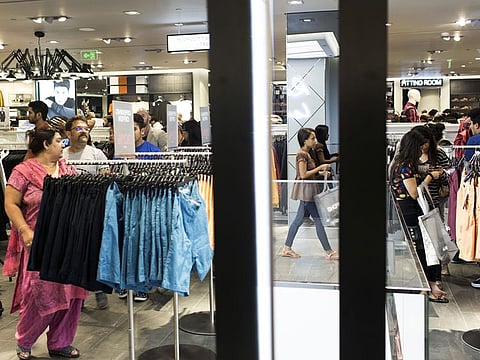Indian economy: Prolonged pandemic dims recovery prospects
Near-zero 2020 GDP growth forecast paints “unrealistically optimistic” picture of economy

Dubai: As the Indian economy is expected to stay pressured in the months to come, economists foresee the central bank in for some more heavy lifting to get growth back on track at the earliest.
India’s GDP had contracted much more severely than expected in the second quarter as private consumption and investment demand collapsed with most non-essential activities barred during the national lockdown – which led to job and income losses, and uncertainty that curtailed spending.
Meanwhile, the pandemic continued to rage on, and India is now the second worst-affected country in the world, having reported more than 8 million cases of COVID-19 and 121,000 fatalities – and there are worries that there could be a spike in the coming weeks and months, as the festive season approaches.
While the number of daily reported cases have recently declined from September highs, fears mount as during holiday seasons, people typically gather in large crowds at places of worships and at shopping malls, especially during Christmas.
Unrealistically optimistic?
With the country’s GDP contracting by 23.9 percent in April-June quarter, India’s central bank this month predicted that the economy is expected to decline by 9.5 per cent, with risks to fall further.
“GDP growth seen “near zero” this fiscal year paint an unrealistically optimistic picture of the economic outlook and, viewed more cynically, may be a way of justifying the ministry’s underwhelming response to the COVID-19 crisis,” noted Shilan Shah, senior India economist at Capital Economics in Singapore.
“In the absence of sufficient government support, it will continue to fall on the Reserve Bank to do as much as it can to support the economy.”
Shah added that the policy meeting this month shows that the committee has turned more dovish on the inflation outlook and that it has reservations about the strength of the economic recovery. “This reinforces our non-consensus view that the easing cycle will resume before long.”
In need of more heavy lifting
Economists agree that for the time being, it is likely the Reserve Bank of India (RBI) has to do the heavy lifting to get growth back on track, but added that with inflationary pressures showing up in the economy, the central bank is unlikely to cut rates further until next year.
The RBI kept its main repo rate unchanged at 4 per cent, earlier this month. The unemployment rate in India was about 6.7 per cent in September, down from the April high of 23.5 per cent, according to data from Centre for Monitoring Indian Economy.
The modest recovery in various indicators seen last month was seen strengthening in the last six months of the fiscal year, which ends in March 2021. Though this implies the economy is past the worst of the crisis, economists say India still needs policy accommodation to nurture the early signs of recovery.
But they also point out the government has very little spending room to spur growth as India’s fiscal position continues to deteriorate with weak revenue growth. India’s chief economic advisor previously said the government will not rule out short-term fiscal stimulus but New Delhi has yet to announce it.
Banking sector, a concern
“Out of all the banking sectors in major economies, India’s warrants the most concern,” Shah wrote. “It came into the crisis in the worst shape, and the scale of damage to private balance sheets means it will be one of the hardest hit from rising Policymakers are unlikely to allow any systemically important bank to fail.”
“But the sector is entering a slow-burning crisis, where bad debts will eat into profits and restrict lending, holding back the recovery throughout the decade. Fortunately, any global spill overs should be small.”
Also Read: What really is the state of Indian economy?
India was seemingly the worst affected economy among emerging markets from the COVID-19 pandemic, with reports citing that investor sentiment has deteriorated the most in the country during the first half of calendar year 2020.
This was according to data from Investors` Macro Ratings Index (IMRI), which gauges investors’ perception of the strength of an economy based on parameters such as inflation, fiscal deficit, current account deficit and change in real GDP growth.
Sign up for the Daily Briefing
Get the latest news and updates straight to your inbox







